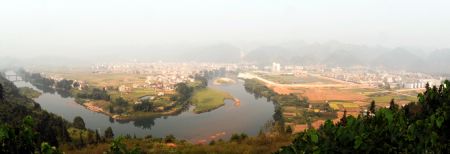| In harmony with trees | |||
http://english.dbw.cn銆€銆€
2010-05-13 09:59:56
|
|||
|
Located 25 km from the county town, for more than 1,000 years, the village was an isolated and self-sufficient place. The villagers kept to a traditional way of living, hunting for food and cutting down the area's towering trees to build their wooden houses and feed their fires. But all that changed in 1984, when a scientific expedition team found a hidden karst forest. The experts were surprised by its rich diversity of rare species and spectacular examples of humid tropical to subtropical karst landscapes, which are characterized by limestone rocks and underground caverns. Wu Minghui, 52, remembers clearly how a county-level nature preservation zone was established that very year, bringing the word "karst" into their lives for the first time. The forest was listed as a national nature reserve in 1988 and included in the South China Karst region, one of the country's six regions included in the UNESCO World Heritage List in 2007. However, as measures for protecting these forests intensified, Wu and other villagers lost their traditional way of life. "How could we suddenly change our way of living?" Wu asks. "But the villagers also realized how distinctive and fragile the forest was. We began to think about what we could do for it," Wu says. Wu describes the past two decades of preservation work as a "difficult and complicated mission". He was among the first four farmer-turned-forest rangers in the Libo Karst National Scenic Area and Nature Reserve in 1984. |
|||
| Author锛? 銆€銆€銆€Source锛? China Daily 銆€銆€銆€ Editor锛? Wu Qiong | |||
 涓枃绠€浣?/a>銆€|銆€
涓枃绠€浣?/a>銆€|銆€











